
Asus ROG Strix Z270G Gaming Review
Manufacturer: AsusUK price (as reviewed): £179.48 (inc VAT)
US price (as reviewed): $199.99 (ex tax)
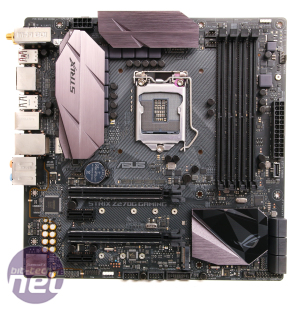 Asus's lineup of ROG boards is markedly different to previous mainstream generations for the simple reason it's essentially been split in two. At the top end demanding more money is the pure ROG Maximus range of boards, which start at the Hero price-wise. Beneath them is the ROG Strix range, and it's here that Asus has transplanted a few of the old Maximus boards too.
Asus's lineup of ROG boards is markedly different to previous mainstream generations for the simple reason it's essentially been split in two. At the top end demanding more money is the pure ROG Maximus range of boards, which start at the Hero price-wise. Beneath them is the ROG Strix range, and it's here that Asus has transplanted a few of the old Maximus boards too.The ROG Strix Z270G Gaming is the replacement for the old Maximus Gene, which has arguably been downgraded from the Maximus range along with the Ranger, with several ATX boards taking its place at a variety of price points and feature sets. The Gene was a fantastic board as it often cost a little less than its ATX counterparts, especially in the pre-Hero and Ranger days, but it was perfect for a small gaming system being micro-ATX too.
Still, we've seen some good buys from the ROG Strix range from the similarly priced Z270F Gaming, at least compared to other Z270 motherboards - yes, we know they're expensive, but this is an industry-wide phenomenon, not just applicable to Asus. Of course, you have the option of buying older hardware, but we're not concerned with that here - Z270 is here, and here to stay.
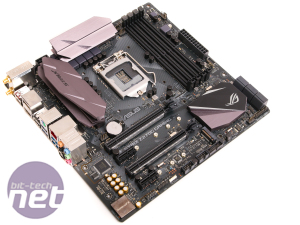
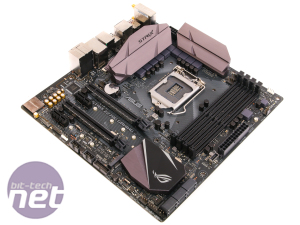
Click to enlarge
The downgrade hasn't done much aesthetically for the ROG Strix Z270G Gaming - we definitely prefer the look of the Maximus VIII model, although the new kid on the block is fairly colour neutral so should be easy to colour match to your system whether you're opting for some lighting or not. Most Z270 motherboards we're seeing offer a pair of M.2 ports, and squeezing these in on a micro-ATX board is obviously quite a challenge. In the end, Asus has done what it did with it's mini-ITX boards and mounted one of the ports on the rear of the PCB, with the other located beneath the second 16x PCI-E slot.
Click to enlarge
Whether or not this has meant there's no room for other components is debatable, but there's a fair bit missing here too. The most obvious is the lack of an LED POST code display, power and reset buttons, and a CMOS clear button, all being present on the last generation Maximus version, as well as USB BIOS Flashback - also absent here. That said, the previous model now costs £200 compared to £170 at launch, so in addition to the fact it's now old tech, this does mean we can forgive the ROG Strix Z270G Gaming for cutting a few corners. It's cheaper, plain and simple.
Click to enlarge
On the flip side, you get features the Maximus board did not have. There's the SupremeFX S1220A codec combined with Texas Instruments RC4580 and OPA1688 op-amps for better audio performance. You get a pair of 4-pin RGB LED headers at the base and top of the PCB, which can be controlled via Asus's Aura software and sport Aura Sync to apply lighting effects across the board's PCH RGB heatsink LED, headers and any Aura-compatible graphics cards or peripherals you have too. There's Asus's SafeSlot PCI-E slots, which resist shearing, and perhaps most significantly, it includes built-in 802.11ac 2x2 dual-band Wi-Fi with an included magnetic antenna. This trumps the Z270F too, despite the fact that the two boards are within spitting distance price-wise.
Click to enlarge
You get the usual six SATA 6Gbps ports plus a USB 3.1 header, and yet again the pesky USB 3.0 header has strayed awkwardly to the bottom mid-PCB, which might make it tricky to route the case cable to it neatly. You get USB 3.1 Gen 2 support on the rear I/O panel courtesy of a Type-A and Type-C port, plus two USB 2.0 ports and four USB 3.0 ports along with an Intel-powered LAN port. It's a busy rear I/O panel for sure, although it would have been nice to see a CMOS clear switch or USB BIOS Flashback button here too.
Click to enlarge
There is one snag, though - it won't affect everyone, but if you're planning on dropping two GPUs into the ROG Strix Z270G Gaming, then it's going to be best to water-cool them. Due to the single-spaced PCI-E slots, two dual slot cards with backplates, as shown here, actually push each other apart, and even without backplates you'll be left with next to no ventilation room for the top card. This was the same on the Maximus Gene, though, as it is for most micro-ATX boards, as as we've seen with our dual-GPU equipped X99 test rig, this can result in the top card throttling. We'd imagine the vast majority of potential owners will want to use a single GPU though.
Click to enlarge
Specifications
- Chipset Intel Z270
- Form factor Micro-ATX
- CPU support LGA1151 compatible (Skylake, Kaby Lake)
- Memory support Dual-channel, 4 slots, max 64GB
- Sound 8-channel ROG SupremeFX S1220A
- Networking Intel Gigabit Ethernet, 802.11ac Wi-Fi
- Ports 1 x M.2 2280 PCI-E 3.0 x4 32Gbps/SATA 6Gbps, 1 x M.2 22110 PCI-E 3.0 x4 32Gbps, 6 x SATA 6Gbps via Intel Z270, 1 x USB 3.1 Type-A, 1 x USB 3.1 Type-C, 1 x USB 3.1 internal header, 6 x USB 3.0 (2 via header), 6 x USB 2.0 (4 via header), 1 x LAN, audio out, line in, mic, Optical S/PDIF out, HDMI 1.4, DVI-D
- Dimensions (mm) 244 x 244
- ExtrasRGB LED extension cable, magnetic Wi-Fi aerial

MSI MPG Velox 100R Chassis Review
October 14 2021 | 15:04

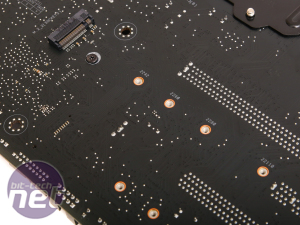
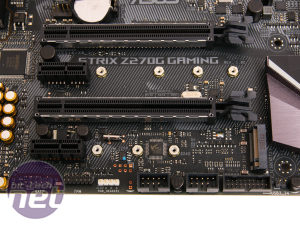
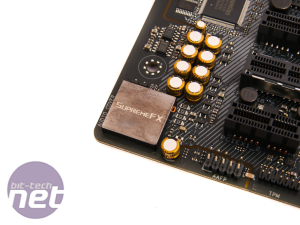
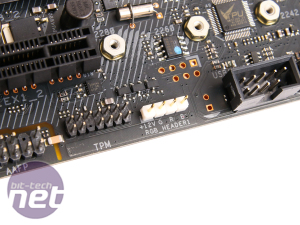
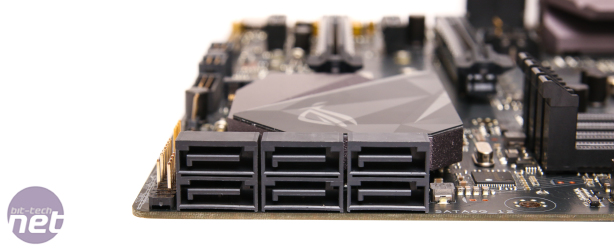
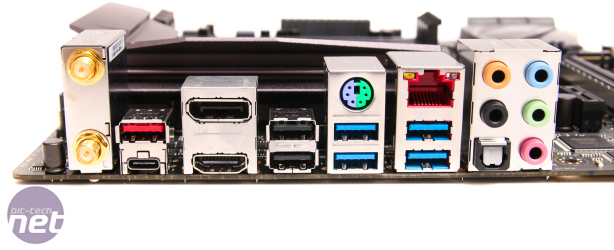
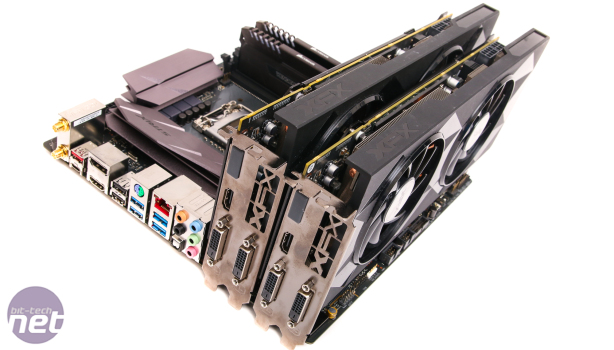







Want to comment? Please log in.